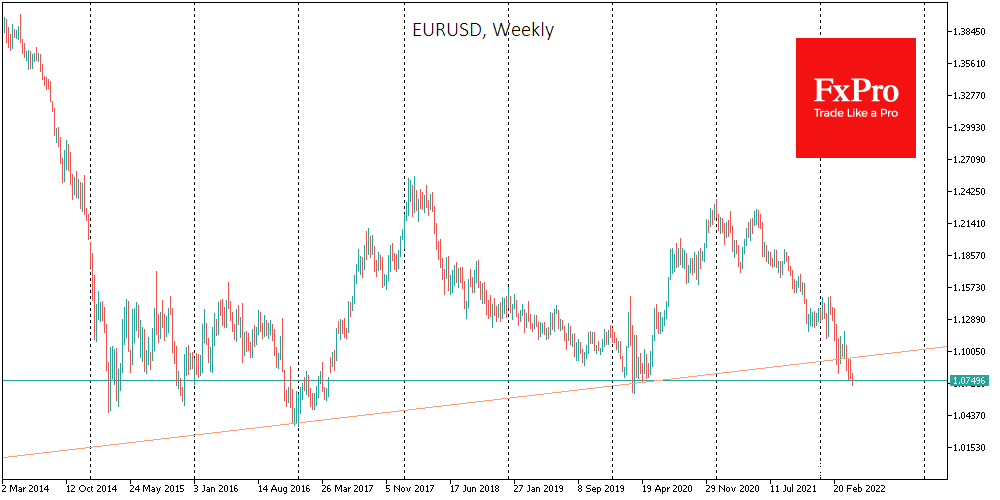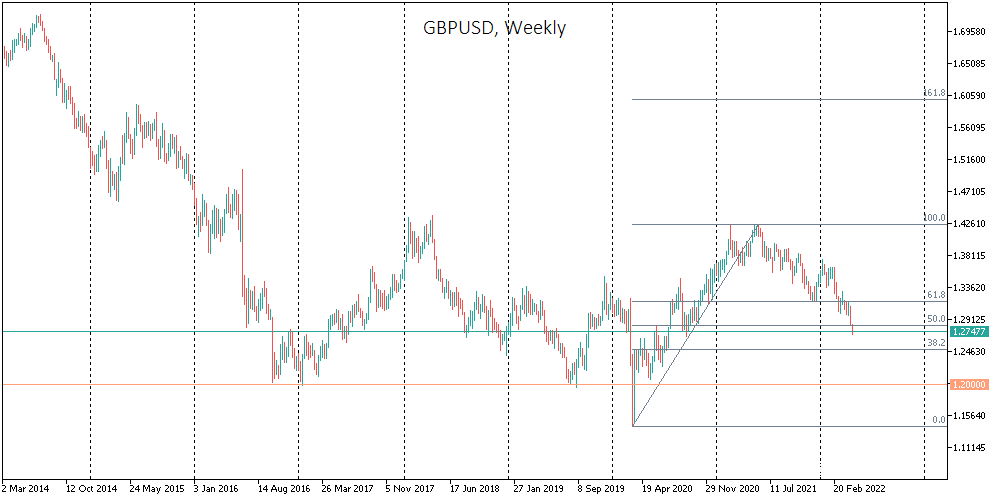The dollar’s main competitors, the euro and the yen, seem to have exhausted their downside potential, and now the volatility threatens the next, broader range of currencies.

The yen has stabilised at 20-year lows at 128 after a 12% slump since the start of March and a 25% drawdown since the 2021 start.
EURUSD was one step away from 1.0700 at the start of the European session, having lost 4.4% since March and 13% from its peak in January 2021. The movement is not too sweeping but steadily lowers the euro traded back in 2003.
However, we are now seeing a marked reduction in the yen and the euro amplitude, while in contrast, it is rising in other market sectors.

The British pound is flying into the abyss for a second day, losing 0.77% on Monday after falling 1.6% on Friday. GBPUSD has capitulated, pulling back to 1.2740, where it last was in September 2020. GBPUSD has moved into the lower half of the trading range this week from after the pandemic hit. The tactical target for the bears, in this case, could be the 1.2600 area, with the final point being 1.2000, where the GBPUSD has repeatedly found support over the past six years.
The Australian dollar has lost about 4% since Thursday. The decline for the fourth consecutive week took about 6% off its peak at the start of April, maybe just half of the potential decline towards 0.6700, a critical turning point in the last 24 years.
Source: FXPro